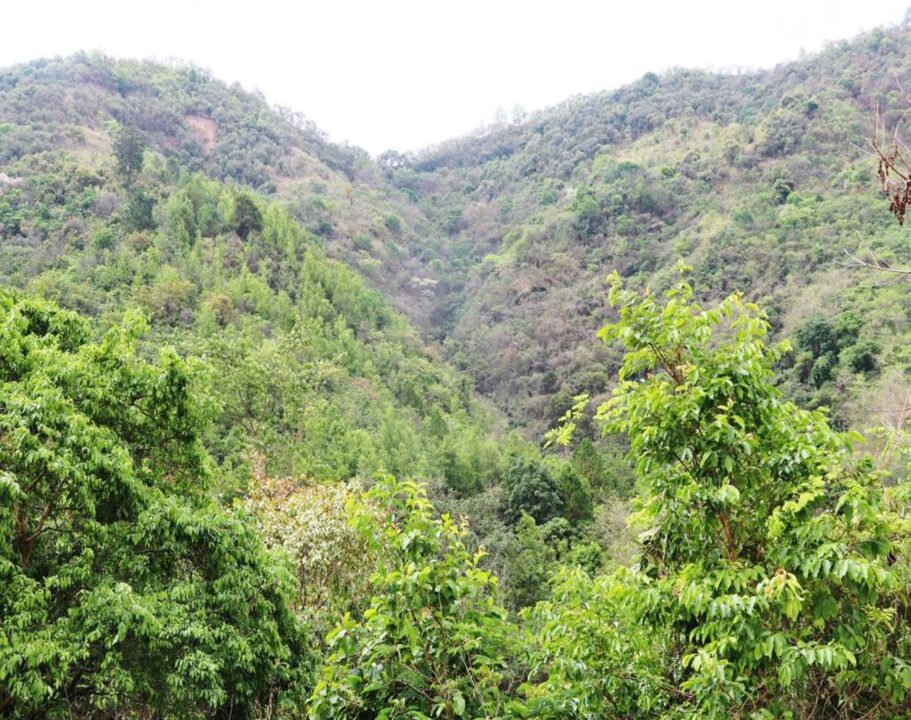By: Dipak Kurmi
Bamboo, often referred to as the “green gold” of Northeastern India, holds immense potential for transforming the economy of the region. The Northeastern states, endowed with an abundance of bamboo plantations, provide a rich source of this versatile plant, whether grown in forests, homestead gardens, or agroforestry systems. Indigenous communities in this region have long utilized bamboo in their daily lives, relying on traditional knowledge passed down through generations. However, despite the rich heritage of bamboo use, its commercial exploitation and large-scale production have yet to fully tap into the domestic and global demand.
The Demand-Supply Gap in Bamboo Production: India’s estimated market demand for bamboo stands at a staggering 27 million metric tonnes, driven largely by its widespread use in construction, handicrafts, and increasingly, furniture. However, the current bamboo production in the country is only able to meet half of this demand. The shortfall, amounting to nearly 50%, is made up by imports, predominantly from China. This gap in production versus demand presents a stark contrast, especially in light of the abundant bamboo resources available in Northeastern India. The fact that the region is not contributing more to meet the country’s bamboo needs is reflective of significant gaps in policy planning and execution, which have impeded the sector’s growth.
Bamboo as a Sustainable Resource: Bamboo is one of the fastest-growing plants in the world, making it a sustainable and eco-friendly alternative to timber. In India, its most popular use is in the construction industry, where bamboo is valued for its strength, adaptability, and low cost. Bamboo scaffolding, for example, has become integral to the construction process, helping the industry reduce its reliance on traditional timber. In addition to scaffolding, bamboo is also widely used in handicrafts, another area where the plant’s versatility shines.
Despite bamboo’s clear advantages, many traditional bamboo artisans in the Northeast continue to work in a largely unorganised sector. This lack of organisation not only limits the artisans’ ability to scale their businesses but also prevents the development of an industrial-level bamboo economy that could significantly contribute to meeting national demand. As a result, a comprehensive shift is needed to transition from small-scale bamboo use to full-scale, commercial bamboo product manufacturing.
Strengthening the Bamboo Value Chain: One key to unlocking bamboo’s potential lies in building a robust value chain, from bamboo extraction to its aggregation, storage, and transportation. Currently, bamboo is aggregated from individual growers and supplied to small traders in city or town markets. These small traders store bamboo in depots, later supplying it to larger traders who often come from outside the region. However, with the recent improvements in road and rail connectivity across Northeastern India, there is great potential to streamline this process by aggregating bamboo directly in bamboo-growing clusters.
Training village youths as bamboo aggregators and suppliers can help build a local bamboo trade network, facilitating a more direct supply to industries. Moreover, banks and financial institutions can play a pivotal role by providing easy credit to village entrepreneurs in bamboo-growing areas. By ensuring that bamboo growers receive remunerative prices, these financial incentives will encourage more individuals to engage in bamboo farming, thereby boosting the supply of bamboo in the market.
The Rise of Bamboo Furniture and E-commerce Opportunities: Beyond construction, bamboo furniture is becoming increasingly popular, particularly in the urban real estate sector. As multi-story apartments continue to proliferate, there has been a noticeable surge in demand for modern bamboo furniture, such as sofa sets and other furnishings. E-commerce platforms have also unlocked huge marketing opportunities for bamboo furniture makers, enabling them to reach a wider audience of consumers who value eco-friendly and aesthetically pleasing products.
To take full advantage of this growing market, traditional bamboo artisans in Northeastern India must be provided with training in modern furniture design and production techniques. Such training would equip them with the necessary skills to transition from handicraft-making to manufacturing high-quality bamboo furniture. Additionally, access to modern tools and machinery is critical for scaling up production. When individual artisans are unable to afford such tools, establishing Common Facility Centres (CFCs) equipped with essential equipment can provide a solution. By making these CFCs easily accessible to artisans, transportation costs can be minimised, making commercial-scale production more profitable.
Unleashing the Potential of Bamboo in the Food Industry: The demand for bamboo is also expanding into new markets, particularly with the growth of the food industry and the recent ban on single-use plastic cutlery. Bamboo cutlery, including spoons, forks, and plates, has emerged as a sustainable alternative to plastic. For traditional bamboo artisans in the Northeast, acquiring the skills needed to produce bamboo cutlery is relatively easy. However, to meet the growing demand for these products on a commercial scale, they require modern machines and tools. Without such equipment, the region risks losing out on this lucrative market to outside competitors who are already capitalising on bamboo’s potential in the food sector.
Policy Gaps and the Need for a Comprehensive Review: Despite the abundance of bamboo in Northeastern India, the region has struggled to maximise its benefits from this versatile resource. One major barrier is the lack of comprehensive data on bamboo production, usage, and marketing. As most bamboo product manufacturing remains unorganised, industrial-level data is virtually nonexistent. This absence of data hampers policy formulation and limits the creation of a strategic roadmap for the sector’s growth.
To address these issues, a baseline survey covering all aspects of the bamboo sector is crucial. This survey should focus on bamboo-growing practices, product-making processes, transportation networks, and the socio-economic status of traditional bamboo growers and artisans. By generating quality data, government policymakers, industry stakeholders, and entrepreneurs can identify the gaps in the bamboo value chain and develop targeted interventions to fill these gaps.
The Future of Bamboo in Northeastern India: For bamboo to reach its full potential as a driver of economic growth in Northeastern India, it is essential that both the government and private sector work together to address the current gaps in policy and execution. Expanding bamboo plantations alone will not be enough. The region must also focus on commercial-scale production, skill development, and infrastructure investment to support the bamboo industry.
A review of current policies by experts can help identify the paradox of local artisans not benefiting from growing markets despite the region’s abundance of bamboo. With the right interventions, Northeastern India can harness the power of bamboo to create new livelihoods, improve local economies, and contribute to India’s overall bamboo demand. The road ahead may be challenging, but with a strategic approach, the region has the potential to become a major player in the bamboo industry on both a national and global scale.












